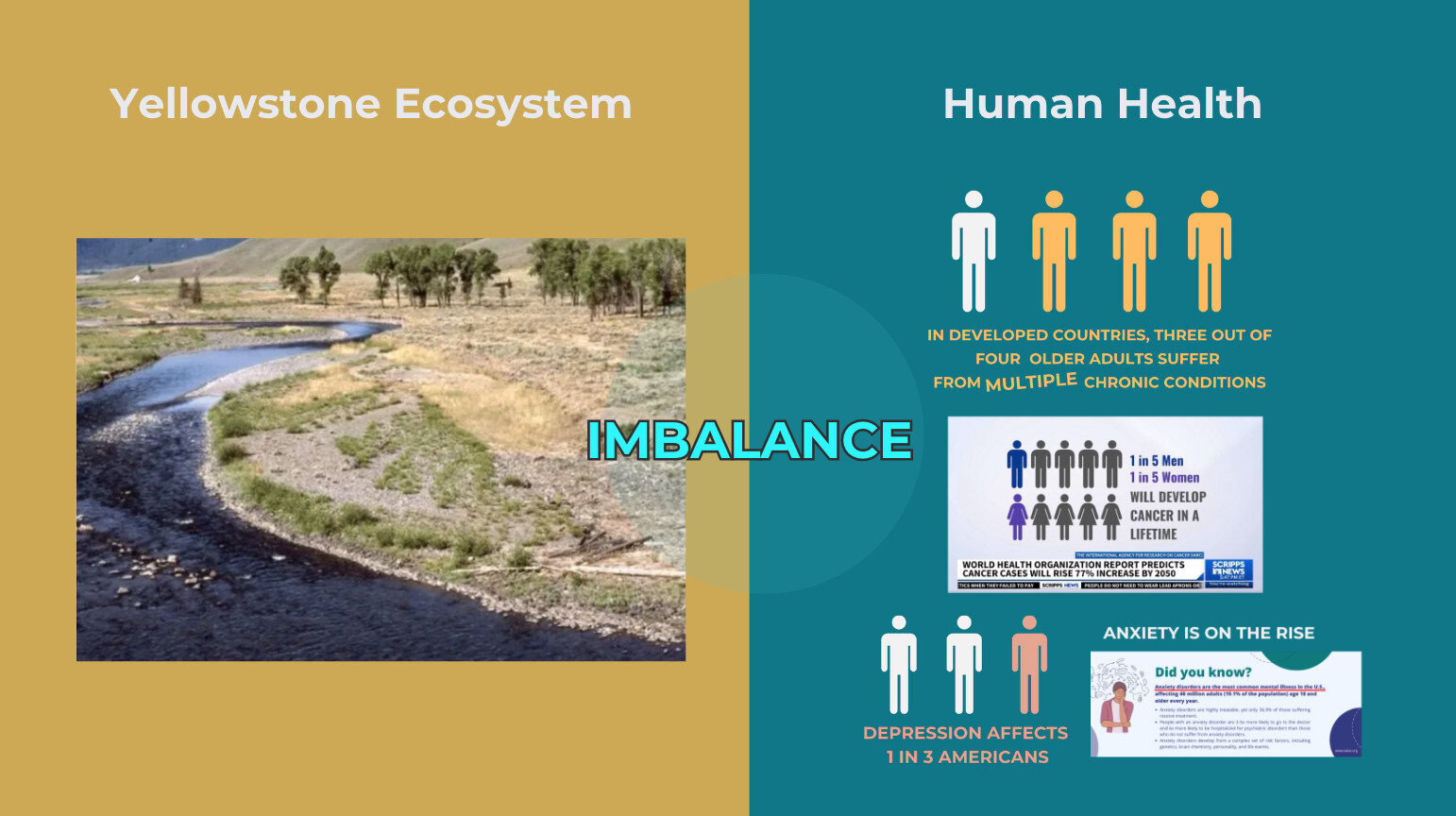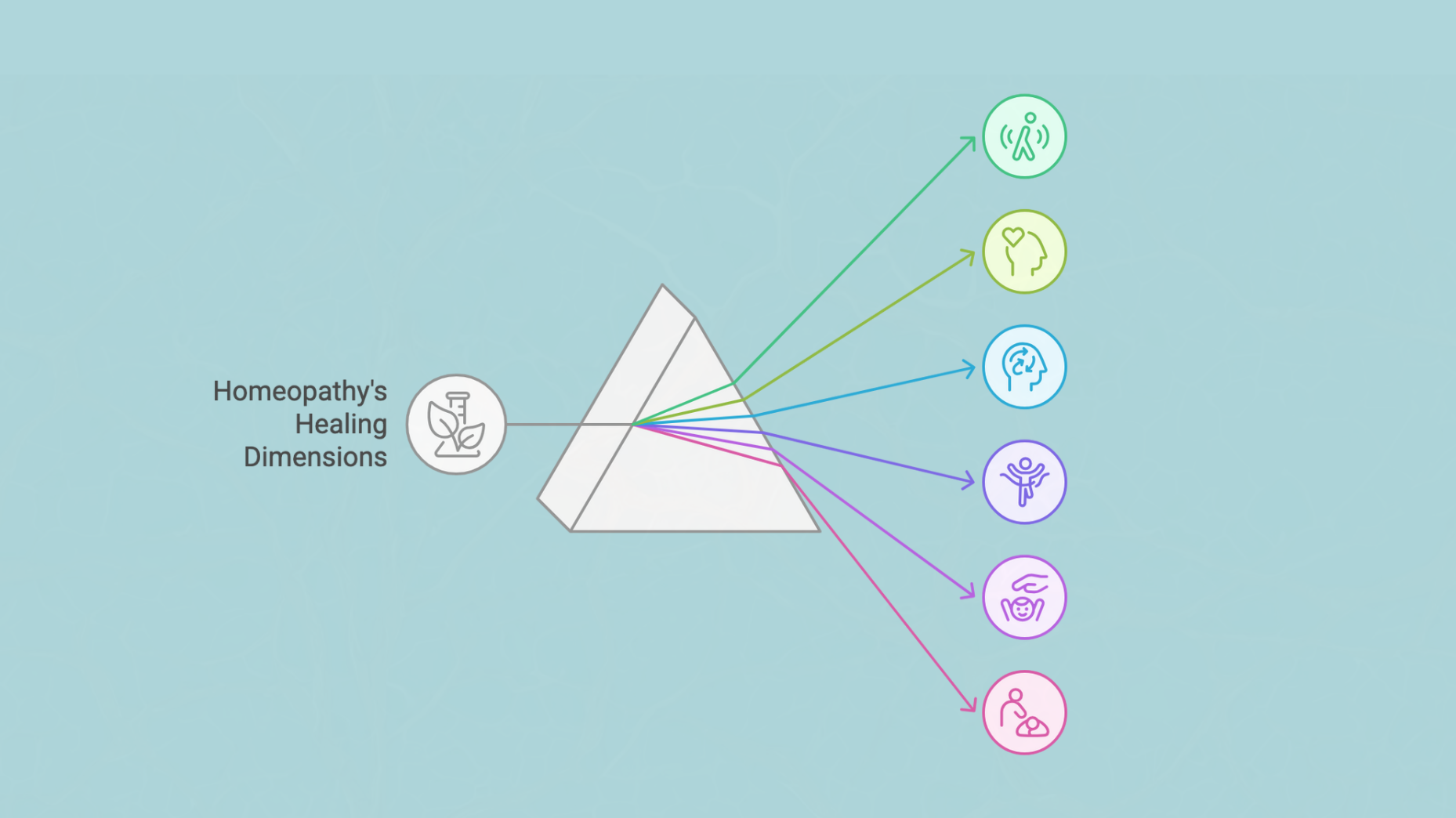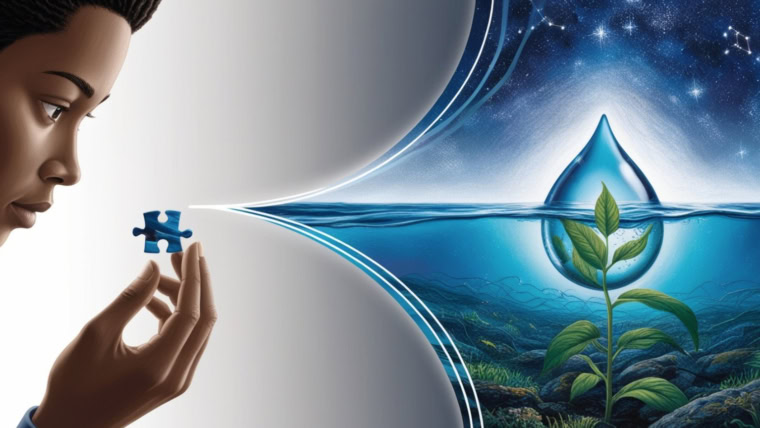Are you doing everything “right” and still stuck in cycles of recurring symptoms?
You’re not alone. Chronic illness is rising worldwide, and our usual approaches often fail to bring lasting relief. Sometimes, they even make things worse.
So what can nature teach us about healing?
The State of Health Today
Globally, one in three adults lives with multiple chronic diseases. In developed countries, that number climbs even higher: about 75% now face several chronic conditions.
The World Health Organization predicts that deaths related to chronic disease could nearly double by 2050. Rates of cancer, autoimmune disorders, anxiety, and depression are rising steadily.
Despite decades of scientific research and medical advances, human health is in widespread decline.
Why isn’t it working?
The truth is: we’re not slowing disease down. We’re speeding it up. Treating symptoms without addressing root causes often speeds the breakdown instead of slowing it.
And we’re missing something essential.
What if the solution isn’t just technical, but perceptual?
What Yellowstone Taught Us
Let’s look at a place that faced a systemic breakdown, and how it turned things around.
Yellowstone National Park was established to protect its wild beauty, a land previously stewarded for thousands of years by Indigenous peoples. But once settlers took over, they saw the wolves as dangerous predators. So they were systematically killed off for over 100 years.
Soon after, the ecosystem began to deteriorate. Elk populations exploded without predators. Vegetation disappeared under pressure. Beavers, fish, and birds began to vanish. Rivers dried up. The park, scientists said, was “dying before our eyes.”
Each action was intended to solve a problem. But taken together, these fixes created a devastating cascade.
What changed everything?
In the 1990s, just 10 to 15 wolves were reintroduced. And something remarkable happened.
Within decades, the elk adjusted. Vegetation recovered. Beavers returned. Fish populations bounced back. Biodiversity bloomed.
The land healed, not because we fixed each issue one by one, but because we supported the whole system.
The Real Problem: Fragmented Thinking
What was the real problem in Yellowstone?
Not the wolves. Not the elk. Not the rivers.
It was perception.
We saw separate pieces instead of one interwoven whole. That distortion led to solutions that caused more harm.
And this same distorted perception is behind many chronic illness journeys.
We isolate organs, symptoms, and systems.
We treat the skin without asking what the gut might be trying to say.
We calm anxiety without exploring the unresolved tension held in the body.
We numb pain without questioning what’s fueling the inflammation beneath it.
We try to separate the physical from the emotional, as if they exist in isolation
but the body doesn’t work that way. It speaks in layers, all connected, all meaningful.
We are not machines. We are dynamic, living systems. Shaped by patterns, traumas, relationships, and histories.
If we ignore the whole, we can’t even see the real problem, let alone solve it.
The Cost of Treating Parts in Isolation
Take a common story:
A child gets a skin rash at 7. It’s treated symptomatically, and it disappears. A year later, allergies appear. Then few years later digestive issues. Headaches. Chronic gastritis. Depression. Brain fog.
Each new symptom is seen, and treated, as separate.
But the deeper imbalance driving these symptoms remains unresolved.
Like Yellowstone, it doesn’t fall apart overnight. One small change leads to another, and another, and another, until the system begins to break down.
We call it “chronic illness.”
But often, it’s not a collection of separate illnesses. It’s one pattern: a breakdown in systemic regulation.
And just like Yellowstone, symptom relief may look like progress, but without root-cause insight, it may actually push the system further off balance.
Here’s a simplified look at how each step in Yellowstone’s ecosystem breakdown parallels a chronic illness cascade:
This comparison is necessarily simplified and needs more nuance and detail that’s beyond the scope of this article, but it helps illustrate the core idea.
| Yellowstone Ecosystem Breakdown | Chronic Illness Breakdown | What It Means |
|---|---|---|
| 1st: Wolves removed | 1st: Skin rash | Suppressing initial symptoms disrupts natural balance. |
| 2nd: Elk overpopulation | 2nd: Allergies | The immune system overreacts, new symptoms appear. |
| 3rd: Vegetation loss | 3rd: Digestive issues | Organ strain and dysfunction grow. |
| 4th: Soil erosion | 4th: Headaches | Systemic inflammation affects brain and nerves. |
| 5th: Water quality decline | 5th: Chronic gastritis | Deepening gut and systemic imbalance. |
| 6th: Loss of animals | 6th: Depression | Emotional and mental health symptoms emerge. |
| 7th: Ecosystem fragmentation | 7th: Poor concentration | Overall system fragmentation leads to cognitive decline. |
Suppressing initial symptoms, like removing wolves, can start a cascade of imbalances that worsen the entire system.
It’s like pulling the leaves off a weed but leaving the roots in the soil.
It may look cleaner for a while, but the problem grows back, often deeper and stronger than before.
Toward a Root-Cause Healing Paradigm
True healing begins when we stop isolating symptoms and start listening to the whole system.
It means recognizing that physical symptoms often carry emotional or mental roots and that treating one layer in isolation rarely leads to lasting change.
It means understanding that suppression is not the same as resolution. That our bodies are not broken machines to be fixed, but intelligent systems trying to adapt, recalibrate, and restore balance.
Just like Yellowstone, the body doesn’t need us to “fix” each issue. It needs the right support for the system to recalibrate.
That’s what root-cause, systems-based healing is all about.
If your symptoms feel like separate puzzles, maybe it’s time to stop solving them in pieces, and start seeing the bigger picture. Your body isn’t broken. It’s speaking. Are you ready to listen differently?
Prefer listening?
You can watch the video version of this article here:
Need personal support on your healing path?
You can book a consultation here



